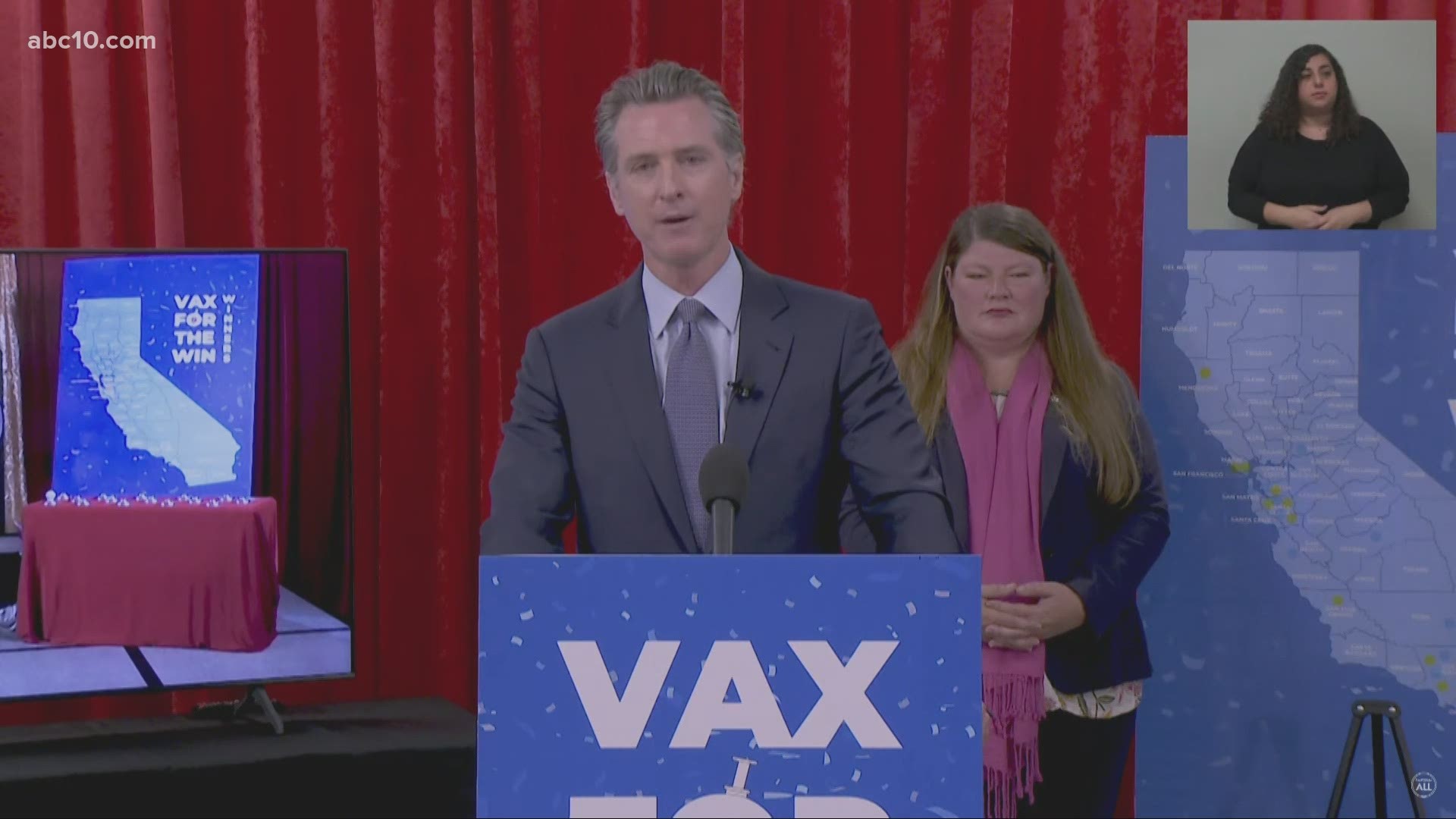SACRAMENTO, Calif. — California Gov. Gavin Newsom has signed an executive order that will lift most of the state's coronavirus rules.
The order Newsom signed Friday takes effect Tuesday. It will end the state's stay-at-home order and its various amendments.
Starting Tuesday, there will be no capacity limits or physical distancing requirements for businesses. Fully vaccinated people can stop wearing masks in most places. Newsom said he will not end the statewide declaration of emergency. That ensures the governor has the power to alter or suspend state laws in the future. That has angered Republican lawmakers who say the declaration is unnecessary.
Summary of new mask rules
Masks will still be required in some circumstances, like public transit (planes, trains, buses, etc.), indoors in schools and other “youth settings”, in healthcare facilities, in state and local correctional facilities, and in homeless shelters, emergency shelters, and cooling centers.
The orders also make it clear that masks must still be worn by unvaccinated individuals in virtually all indoor settings.
Even with Newsom’s executive orders, workplaces are still subject to the standard set by the California Occupational Safety and Health Standards Board (CalOSHA). CalOSHA is set to consider revising its conflicting rules on June 17.
On Friday, CalOSHA updated a proposal for the June 17 meeting. The proposal suggests employees wear masks when required by orders from the California Department of Public Health.
If the proposal is approved, CalOSHA guidelines will align with state guidelines starting June 28.
Business owners and venue operators will have the option to set their own masking requirements for patrons. They can also allow patrons to self-attest that they have been vaccinated or even require proof from patrons that they have been vaccinated.
No person can be told not to wear a mask in order to participate in an event or enter a business.
Some exemptions are given in Newsom’s executive orders. Some of those exemptions include children under 2 years old; people with medical conditions, mental health conditions, or a physical disability that prevents mask-wearing; people who are hearing impaired or those who need to speak with the hearing impaired; and people for whom wearing a mask would create a risk related to their work.



















